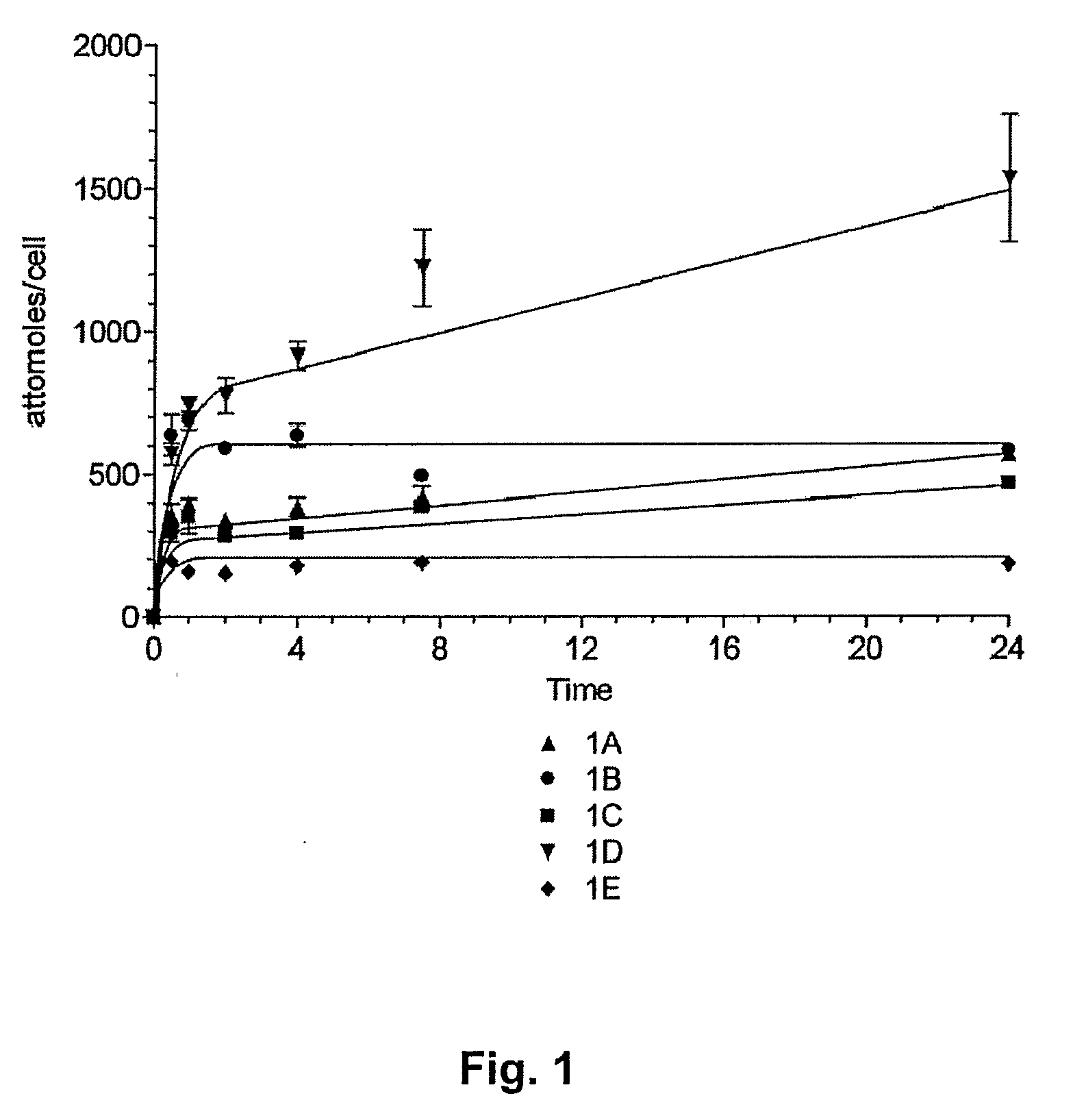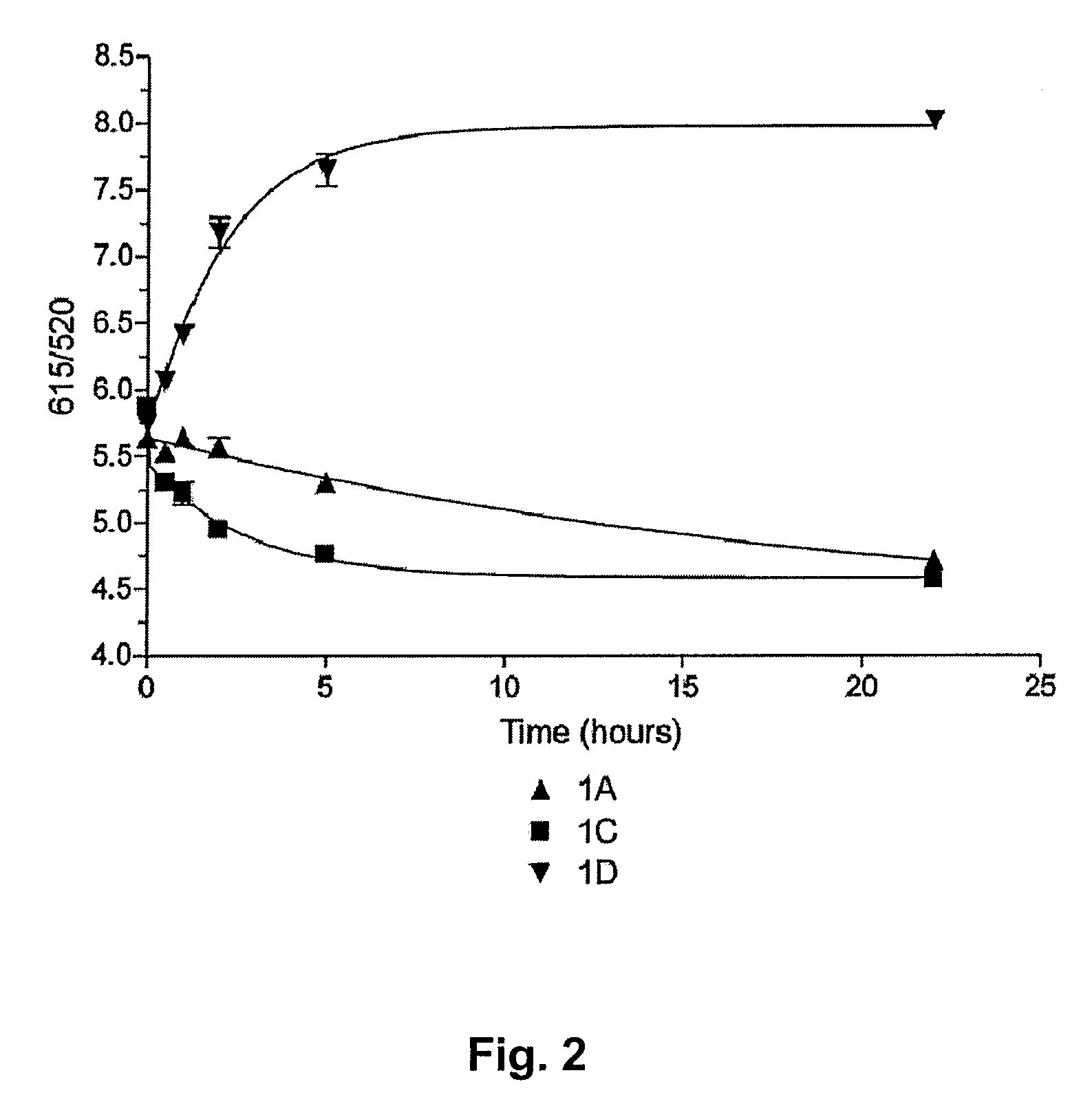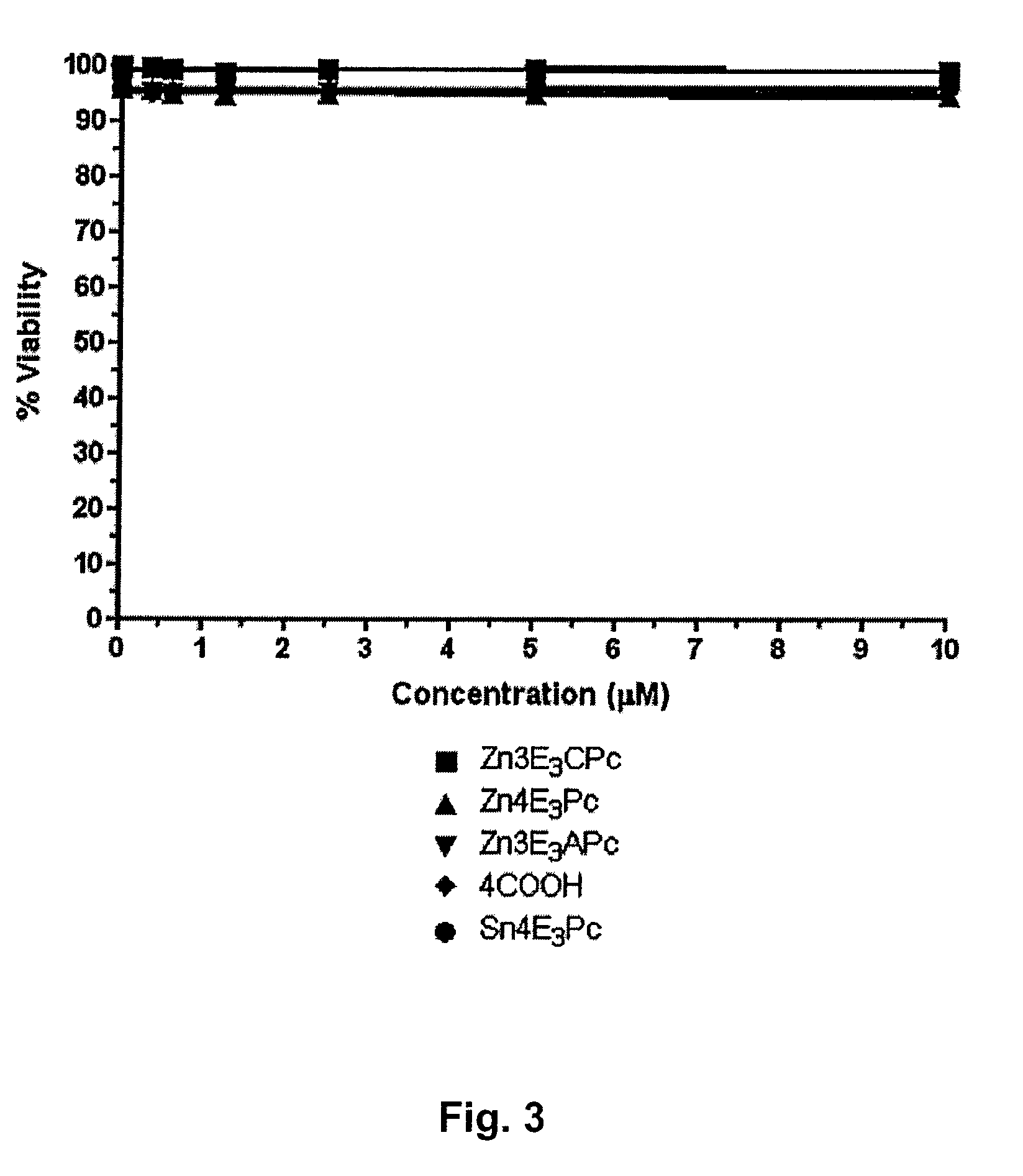Tetraazaporphyrin-Based Compounds and Their Uses
a technology of tetraazaporphyrin and compounds, which is applied in the field of chemically robust near-infrared fluorophores, can solve the problems of inability to conjugate to biomolecules, lack of chemically robust fluorophores that are also water-soluble, and little focus on using phthalocyanines to label biological molecules or cell staining, etc., to achieve excellent fluorescent biomarkers, high chemical stability, and favorable photophysical properties
- Summary
- Abstract
- Description
- Claims
- Application Information
AI Technical Summary
Benefits of technology
Problems solved by technology
Method used
Image
Examples
example 1
[0120]A method for the synthesizing tethered-phthalocyanines is outlined in Scheme 2 below. The R-groups are selected from the group consisting of CH3, H, CH2CH3, iPr, iBu, and SO3H; where the R's may be the same or different. In addition, optional cyclization using one or more of the functional groups may allow for easier separation of products with differing number of anions by ion exchange chromatography. This general approach can yield either symmetrically or unsymmetrically substituted phthalocyanines. Sulfur- or oxygen-protected compounds may be used in place of the nitrogen-Boc protected ligand when making other tethered phthalocyanine compounds.
example 2
[0121]N-Boc-Serinol. N,N-diisopropylethylamine (DIEA; 10.3 mL, 59 mmol, 1.1 equiv) was added to serinol (4.88 g, 54 mmol, 1 equiv) in 10 mL methanol. A solution of di-t-butyl dicarbonate (12.9 g, 59 mmol, 1.1 equiv.) in 5 mL methanol was then added to the original solution. The reaction was exothermic and evolved gas. The reaction appeared to be complete after 15 min. (as determined by TLC analysis in 9:1 CHCl3:CH3OH with ninhydrin stain). The solvent was then removed at reduced pressure, and the crude material was purified by flash chromatography, using CHCl3:CH3OH (first at a 9:1 ratio and then at a 85:15 ratio), to yield 7.18 g (72% yield) of white, flaked crystals. [Rf: 0.35 (5:1 CHCl3:CH3OH); melting point 85-86° C.; 1H NMR (200 MHz, CDCl3) δ 5.25 (br d, J=5.6, 1H, NH), 3.9-3.65 (m, 5H, (—CH2)2CH—), 2.62 (t, J=5.6, 2H, OH), 1.45 (s, 9H, C(CH3)3)].
example 3
[0122]To prepare the bis-phthalonitrile used in scheme 2, the nitrogen of serinol was Boc-protected, and the serinol was then reacted with 3-nitrophthalonitrile on a multi-gram scale, to give the desired tethered bis-phthalonitrile, in 70% yield.
PUM
| Property | Measurement | Unit |
|---|---|---|
| wavelengths | aaaaa | aaaaa |
| wavelength | aaaaa | aaaaa |
| donor-acceptor separation distance | aaaaa | aaaaa |
Abstract
Description
Claims
Application Information
 Login to View More
Login to View More - R&D
- Intellectual Property
- Life Sciences
- Materials
- Tech Scout
- Unparalleled Data Quality
- Higher Quality Content
- 60% Fewer Hallucinations
Browse by: Latest US Patents, China's latest patents, Technical Efficacy Thesaurus, Application Domain, Technology Topic, Popular Technical Reports.
© 2025 PatSnap. All rights reserved.Legal|Privacy policy|Modern Slavery Act Transparency Statement|Sitemap|About US| Contact US: help@patsnap.com



